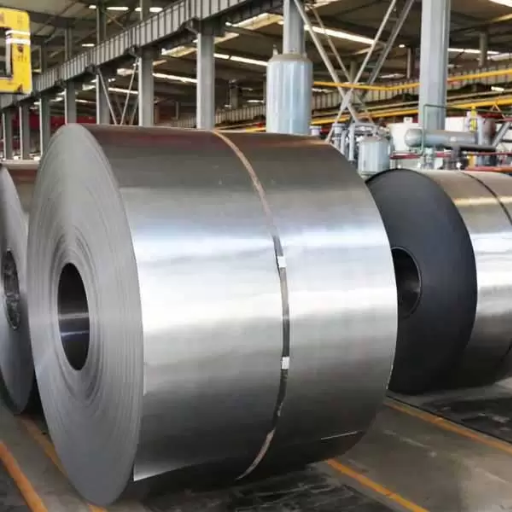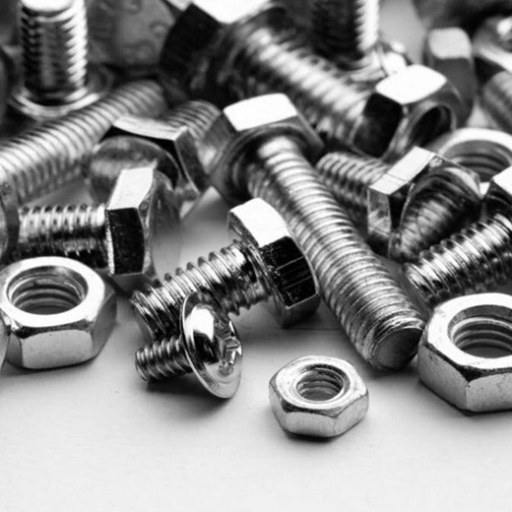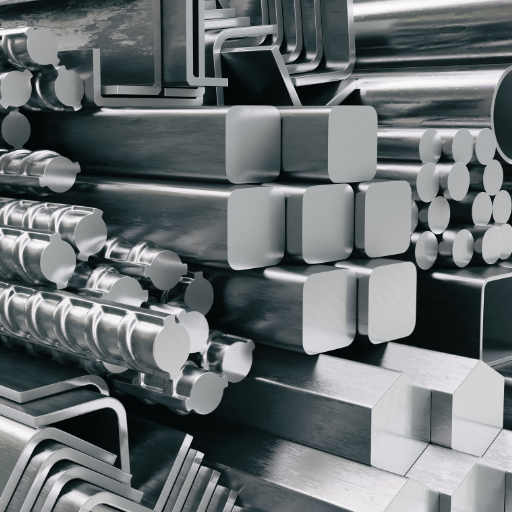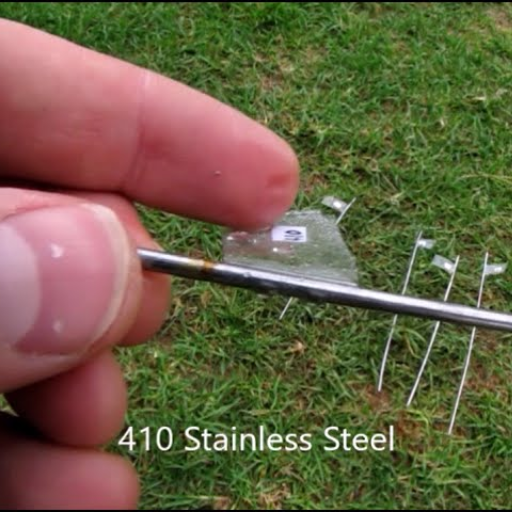What Makes 410 Stainless Steel Stand Out?

Image source: https://www.hotshotovens.com/
The Unique Composition of 410 Stainless Steel
Comparing 410 Stainless Steel to Other Stainless Steel Grades
Although distinguished by some key properties and experiences, there are certain critical similarities and dissimilarities in relation to other stainless-steel grades. Unlike the austenitic 304 and 316 grades that exhibit outstanding corrosion resistance and non-magnetic characteristics, martensitic grade of stainless steel called 410 displays moderate corrosion resistance together with high hardness. This is because it has a higher carbon content compared to its more corrosion resistant but softer counterparts of 304 and 316.
Additionally, machines made from 410 stainless steel can be heat treated for improved mechanical properties such as hardness and strength while this is not possible with cases like austenitic grades such as those of 304 & 316. On the contrary, it tends to become less ductile than these types of steels at lower temperatures which can make them fracture brittlely.
Moreover, industrial applications frequently select 410 because it is good at resisting wear and retaining its structure when subjected to extreme conditions; thus making it ideal for cutlery manufacturing, valve components production or fabrication of bolts. On the contrary, food processing equipment use mostly preferred stainless-steel type are either type that are either made from 304 or otherwise entirely composed from these metals.
In conclusion, though there are several benefits associated with the employment of the above mentioned alloy like high machinability and hardness, they come at the expense of superior corrosion resistance as well as ductility that characterize other types such as those containing elements mentioned like nickel or molybdenum particularly if one talks about certain SS classes including numbers that refer to materials chemistry. Each grade therefore possesses a unique combination of qualities necessary for meeting specific application requirements.
Understanding the Martensitic Structure of 410 Stainless Steel
The martensitic structure of 410 stainless steel is known for its body-centered tetragonal crystal arrangement, which is formed by quick cooling or quenching from the austenitizing temperature range (generally between 925°C and 980°C). As compared to other forms of stainless steels, this structure provides it with high hardness and strength. In the process of heat treatment, especially tempering, the martensitic structure can be engineered in such a way that it attains desired mechanical properties.
Martensitic transformation takes place in 410 stainless steel because of its higher carbon content thereby distinguishing it from the grades like 304 and 316 which do not undergo transformations. This leads to a remarkable quality of wear resistance as well as reasonable corrosion resistance. Nevertheless, as a result, this means that this type of material will be less ductile overall at lower temperatures and more brittle in comparison to its austenitic analogues.
Exploring the Corrosion Resistance of 410 Stainless Steel

What Gives 410 Stainless Steel Its Corrosion Resistance?
The reason why 410 stainless steel is considered as corrosion resistant is because of the presence of chromium. This chromium which usually occurs in an amount ranging from 11.5-13.5% in 410 stainless steel, forms a passive oxide film on the surface of the metal this prevents further oxidation and corrosion from taking place. It is this layer that allows steels to be used even under mildly corrosive conditions such as contact with fresh water and air.
However, its corrosion resistance is fair as compared to austenitic grades like 304 and 316 which have higher amounts of chromium (18% and16-18%, respectively) and additional elements like nickel and molybdenum.. These differences make it less resistant to pitting or crevice corrosion especially in chloride solutions or marine environments.
Key technical parameters include:
- Chromium Content: 11.5-13.5%
- Carbon Content: 0.08-0.15%
- Nickel Content: 0.75% max (compared to higher percentages in austenitic grades)
Limitations of 410’s Corrosion Resistance Compared to Other Alloys
Although 410 stainless steel offers a balance of strength and moderate corrosion resistance, it has some limitations compared to other stainless steel alloys such as 304 and 316. The main limitation is that, unlike 410, these other grades of steel contain more chromium which helps to form a strong passive oxide layer that prevents corrosion. Because of this, it becomes susceptible to rusting and staining under difficult weather conditions.
410 stainless steel is especially vulnerable to pitting and crevice corrosion in acidic or chloride-rich environments like marine applications. In contrast, alloys such as 304 and 316 have higher amounts of chromium and added alloying elements including nickel and molybdenum that greatly enhance their resistance against corrosion.
Another aspect about 410 stainless steel is its carbon content; though good for hardening and wear resistance, the material may corrode locally if not properly tempered. So indeed there are certain instances when it might be necessary to go for higher grades than the ones found in the likes of type 316 which exhibits superior general and localized corrosion resistance where applications with extreme environmental exposure conditions or those which need very high corrosion protection are required.
Enhancing Corrosion Resistance Through Surface Treatment
Various techniques can be used in order to improve the corrosion resistance of 410 stainless steel. One way of doing this is through passivation, which is a chemical treatment that removes free iron from the surface and promotes formation of a protective layer made out of chromium oxide. This includes submerging the steel in acid solution to dissolve impurities and enhance corrosion resistance.
Another common method is electro-polishing, which selectively removes some material from the surface so as to make it smooth and cleaner. The technique helps remove micro-crevices where corrosion may start, hence enhancing material’s resistance towards corrosive environments.
In addition, coatings like electroplating and applying protective films can act as a physical barrier against corrosive agents. For instance, coatings such as zinc, nickel or chrome can provide an extra layer of protection thus reducing chances of rusting and staining. Other advanced methods like Physical Vapor Deposition (PVD) can also be employed for depositing thin hard layers that improve both wear and corrosion properties of 410 stainless steel. These surface treatments are necessary to increase the lifespan of 410 stainless steel under aggressive conditions.
Examining the Mechanical Properties of 410 Stainless Steel

Mechanically, 410 stainless steel is considered as a very versatile alloy due to its good balance of properties. Its other significant characteristics include high tensile strength and toughness. For instance, the steel has a tensile strength between 450 and 650 MPa when it is annealed. This level of strength is enough for making mechanical and structural parts. Furthermore, its moderate ductility shown in elongation as well as impact resistance allows the combination of hardness with flexibility.
After being casted or after solidification or air cooling, 410 stainless steel can be heated to temperatures ranging from HRC 35-45 through different heat treatment techniques developed for different applications i.e. oil quenching (OQ), martempering (MT) and austempering (AT). It exhibits good fatigue resistance which ensures that it lasts longer under cyclic loading conditions thus making it suitable for springs, fasteners and other dynamic parts. These mechanical properties are important in choosing the right grade of this material in applications where strength, hardness and toughness are critical design considerations.
Strength and Hardness: The Dual Advantages of 410 Stainless Steel
410 stainless steel presents a distinctive combination of strength and hardness that sets it apart from the rest in various industrial applications. Below, we present the main technical parameters supporting this dual advantage.
- Tensile Strength:
- Annealed Condition: 450-650 MPa
- This high tensile strength is good for structural and mechanical components because they are capable of withstanding loads.
- Hardness:
- As-Quenched Condition: Achievable hardness of HRC 35-45
- Different heat treatments can be used to achieve this range in order to meet various application requirements for better wear resistance and durability.
- Ductility:
- Moderate ductility of 410 stainless steel allows it to have elongation and impact without cracking which makes it suitable for parts that require both rigidity as well as flexibility.
- Fatigue Resistance:
- Excellent fatigue resistance under cyclic loading also implies its suitability to dynamic parts like springs & fasteners thereby ensuring a long service life even under repeated stress.
Impact of Heat Treatment on 410’s Mechanical Properties
The mechanical properties of 410 stainless steel change greatly due to heat treatment, thus making it highly versatile for diverse applications. The following are the major parameters that illustrate ways in which different heat treatments can alter its properties:
- Annealing:
- Temperature: 815-900°C (1500-1650°F)
- Outcome: Material is softer and more ductile, which makes machining and forming operations easier. In annealed condition, tensile strength usually ranges from 450-650 MPa.
- Hardening:
- Temperature: 980-1010°C (1800-1850°F)
- Cooling: Air or oil quenching
- Outcome: There is an improved hardness of up to HRC 35-45 which increases wear resistance. This kind of treatment is ideal for parts which undergo high wear conditions.
- Tempering:
- Temperature: 150-370°C (300-700°F)
- Outcome: Balances hardness and toughness, reducing brittleness while maintaining sufficient hardness for application-specific requirements. The exact properties depend on the tempering temperature.
- Example: At lower temperatures of tempering (150 –200° C), the hardness value is increased while at higher temperatures (300 –370° C) ductility and toughness are enhanced.
- Stress Relieving:
- Temperature: 650-675°C (1200-1250°F)
- Outcome: It leads to reduction of internal stresses brought about by either machining or quenching operations and thus enhances dimensional stability without significantly affecting hardness or strength.
The Role of Chromium in Enhancing 410 Stainless Steel’s Properties
The Significance of Heat Treatment for 410 Stainless Steel

Annealing vs. Tempering: Best Practices for 410 Stainless Steel
Proper annealing and tempering processes are of key importance in order to achieve the desired mechanical properties with respect to 410 stainless steel.
Annealing
In this process, the steel is heated to a temperature range of between 815-900°C (1500-1650°F) and then slowly cooled, usually in a furnace. This helps to refine the grain structure, relieve internal stresses and improve machinability. Good Annealing Practices include:
- Ensuring that heat is applied evenly and can be controlled.
- Preventing the development of residual stress through slow cooling.
- Retaining correct temperature range for balancing machinability vs. ductility.
Tempering
This involves reheating quenched steel at temperatures which range from 205-370°C (400-700°F), followed by air-cooling. This brings about reduction in brittleness while the required hardness is retained. Best practices in tempering include:
- Choosing the right tempering temperature depending on what balance of hardness and toughness wanted.
- Regulating time for tempering so as to produce uniform properties across materials.
- Followed by tempering immediately after quenching as a remedy for stress relaxation and prevention of cracking.
Optimizing Heat Treatment Parameters for Improved Performance
410 stainless steel’s mechanical properties and overall performance can be improved by optimizing heat treatment parameters. Here are some critical factors you need to think about:
- Precise Temperature Control: Accurate temperature control during heating and cooling is a must. Use good thermocouples and other temperature monitoring systems to maintain even temperatures, preventing overheating or under heating which may destroy the material.
- Quenching Medium Selection: Different quenching media with varying cooling rates should be based on the desired cooling rate. These include oil, water, and air. They have different cooling rates that affect the hardness and stress levels in the final steel significantly.
- Consistent Heating Rate: A uniform heating rate stops thermal gradients within the material from developing which produce non-uniform mechanical properties. This will lead to controlled grain structure and relief of stress through gradual temperature increase.
- Multiple Tempering Cycles: For those applications that are critical, there should be multiple tempering cycles carried out so as to strike a balance between its toughness and hardness. In doing so, residual stresses are reduced while stability of materials is achieved.
How Quenching Affects the Structure and Properties of 410
Understanding the Specifications and Standards for Type 410 Stainless Steel

Deciphering the UNS S41000 Specification
Ensuring Compliance with Global 410 Stainless Steel Standards
Key Considerations When Selecting 410 Stainless Steel for Your Application
Assessing the Heat Resistance Capabilities of 410 Stainless Steel

Comparing 410’s Heat Resistance to Other Stainless Steel Variants
It is important that when comparing the heat resistance of different stainless steel types, 410 stainless steel being one of them, particular conditions and applications must be taken into consideration. Type 304 stainless steel for example has high contents of chromium and nickel giving it better resistance to oxidation as well as scaling at higher temperatures thus allowing it to operate efficiently up to 1700°F (927°C). Conversely, Type 316 stainless steel blended with molybdenum provides increased resistance to crevice corrosion and pitting at elevated temperatures including operation in contact with air up till the level of 1600°F (870°C).
On the contrary, type 410 stainless steel unlike other grades like 304 or 316 does not retain their mechanical properties at extremely high temperatures but yet resists oxidation up to a maximum temperature of about 1200°F for continuous service or intermittent exposure reaching even up to 1600°F. This makes it an economical choice for instances where only a moderate amount of heat resistance is required and its hardness, corrosion resistance as well as wear properties are advantages.
The Effects of High-Temperature Exposure on 410 Stainless Steel
When 410 stainless steel is exposed to high temperatures, several consequences can affect its performance and structural integrity. The process of thermal expansion may occur in 410 stainless steel at elevated temperatures where the metal increases slightly due to heating up. This increase in size affects dimensional stability and if expansion is restricted for this kind of steel, it can develop thermal stresses.
Similarly, another important effect is tempering where the hardness and strength of the steel are prone to long-time heat exposure alterations. These results often decrease tensile strength and hardness resulting in poor wear resistance. Moreover, 410 stainless steel deserves caution because although it offers moderate oxidation resistance; yet above certain temperature levels an oxide surface layer can form on it. The layer of oxide serves as a protection against metal but over time scaling as well as surface deterioration could be experienced.
However, even with these effects, still 410 stainless steels performs better than some standard steels under moderate high temperatures. It is applicable for applications that require modest heat resistance considering that it retains mechanical soundness without scaling up to continuous service at 1200°F (650°C). Although when subjected to prolonged higher temperatures other grades of stainless steels like either 304 or316 has more superior heat-resistance while maintaining their oxidation stability.
Practical Applications Benefiting from 410’s Heat Resistance
Reference sources
-
Bergsen – Understanding Different Stainless Steel Grades
- Bergsen offers a comprehensive overview of various stainless steel grades, including 410. This resource explains the properties, applications, and benefits of 410 stainless steel, making it a valuable guide for understanding its unique characteristics.
- Source: Bergsen
-
Hot Shot Oven – Heat Treating 410 Stainless Steel: A Guide for Getting the Best Results
- Hot Shot Oven provides an in-depth guide on the heat treatment process of 410 stainless steel. This article covers essential properties, techniques, and best practices for optimizing the performance of 410 stainless steel, offering practical insights for professionals.
- Source: Hot Shot Oven
-
Machine Tools Hub – Unlocking the Secrets of Stainless Steel
- Machine Tools Hub delivers a detailed exploration of stainless steel types, including 410 stainless steel. This guide includes expert tips, tricks, and techniques for working with stainless steel, enhancing the reader’s technical understanding and application knowledge.
- Source: Machine Tools Hub
Frequently Asked Questions (FAQs)
Q: What is 410 stainless steel, and how does it differ from other types?
A: 410 is a martensitic stainless steel that provides good corrosion resistance plus high strength and hardness. Compared to austenitic stainless steel, which is known for its high corrosion resistance and formability, 410 offers higher strength and heat resistance but has lower corrosion resistance. Its unique combination makes it suitable for applications requiring both durability and moderate corrosion resistance.
Q: What makes 410 stainless steel highly resistant to corrosion?
A: 410 stainless steel provides good corrosion resistance due to its high chromium content, approximately 11.5%. This level of chromium helps form a protective oxide layer on the steel’s surface, making it resistant to various corrosive environments. However, it is less resistant to corrosion compared to austenitic grades and is usually recommended for use in mildly corrosive conditions.
Q: Can 410 stainless steel be heat treated for enhanced properties?
A: Yes, heat treated 410 stainless steel can achieve higher strength and hardness levels. This process involves heating the steel to a specific temperature followed by cooling, which modifies the metal’s internal structure. After heat treatment, 410 stainless steel can offer improved mechanical properties, making it suitable for demanding applications that require high strength and specific hardness values.
Q: What are the typical applications of Type 410 stainless steel?
A: Type 410 is used in various applications where both corrosion and heat resistance are required though it has moderate corrosion resistance. Common uses include cutlery, steam and gas turbine blades, kitchen utensils, fasteners, and parts for pumps and valves. Due to its ability to be polished, it is also used in applications where aesthetic appearance is important.
Q: How does polishing affect 410 stainless steel?
A: Polishing 410 stainless steel improves its appearance and enhances its corrosion resistance by creating a smooth surface that reduces the adherence of corrosive substances. A polished finish also facilitates easier cleaning, which is beneficial in applications where hygiene is a priority, such as in the food processing and medical industries.
Q: Is 410 stainless steel suitable for cold working?
A: 410 stainless steel can be cold worked using standard methods like cold rolling, though it is harder to work than austenitic stainless steel due to its higher strength and hardness. Cold working can improve its strength and hardness further, but the process should be cautiously performed to avoid cracking. Preheating and annealing may be necessary to optimize cold working processes.
Q: How does the corrosion resistance of 410 stainless steel compare to other alloys?
A: Compared to 410, austenitic stainless steels generally offer superior corrosion resistance, especially in environments that are highly corrosive. However, 410 provides good corrosion resistance combined with high strength and hardness, making it more suitable for applications where these mechanical properties are critical. For environments where corrosion is a major concern, such as marine or highly acidic settings, other stainless steel alloys with higher corrosion resistance should be considered.
Q: What is the significance of the chromium content in alloy 410?
A: The chromium content in alloy 410, which is around 11.5%, is crucial for its corrosion resistance. Chromium in the alloy forms a passive film of chromium oxide on the surface of the steel, which acts as a barrier against corrosive agents. This passive layer is what gives 410 its ability to resist corrosion to a certain degree, making it suitable for applications exposed to mild corrosive conditions.








